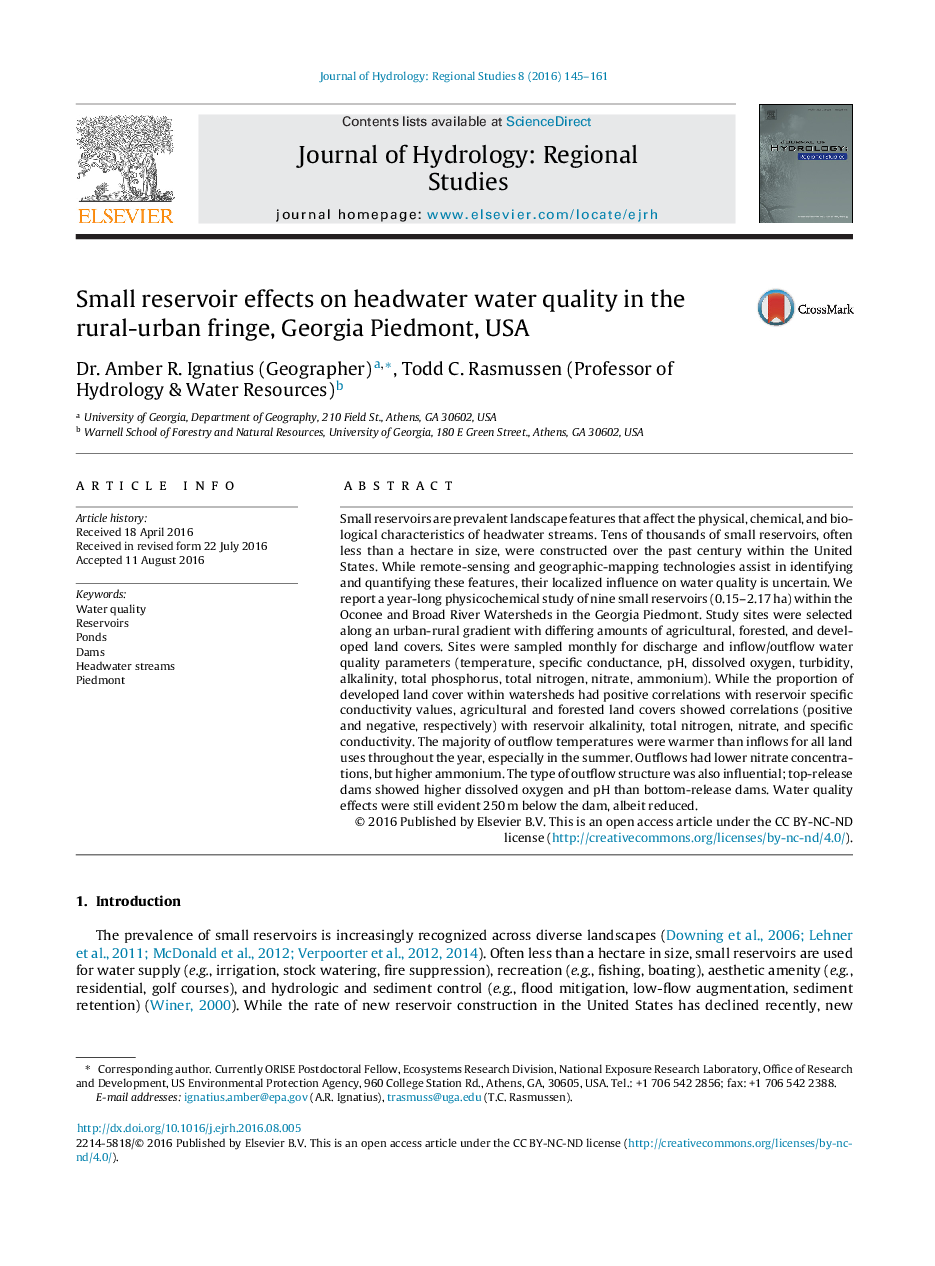| Article ID | Journal | Published Year | Pages | File Type |
|---|---|---|---|---|
| 4435071 | Journal of Hydrology: Regional Studies | 2016 | 17 Pages |
•Upstream and downstream physicochemical parameters monitored monthly at nine small reservoirs (0.15–2.17 ha) along an urban-rural gradient.•Reservoirs elevated downstream temperatures, especially during summer and below top-release dam structures.•Reservoirs decreased downstream nitrate concentrations, but increased downstream ammonium.•While reservoir-altered pH and DO values recovered 250 m downstream, elevated temperatures were sustained.
Small reservoirs are prevalent landscape features that affect the physical, chemical, and biological characteristics of headwater streams. Tens of thousands of small reservoirs, often less than a hectare in size, were constructed over the past century within the United States. While remote-sensing and geographic-mapping technologies assist in identifying and quantifying these features, their localized influence on water quality is uncertain. We report a year-long physicochemical study of nine small reservoirs (0.15–2.17 ha) within the Oconee and Broad River Watersheds in the Georgia Piedmont. Study sites were selected along an urban-rural gradient with differing amounts of agricultural, forested, and developed land covers. Sites were sampled monthly for discharge and inflow/outflow water quality parameters (temperature, specific conductance, pH, dissolved oxygen, turbidity, alkalinity, total phosphorus, total nitrogen, nitrate, ammonium). While the proportion of developed land cover within watersheds had positive correlations with reservoir specific conductivity values, agricultural and forested land covers showed correlations (positive and negative, respectively) with reservoir alkalinity, total nitrogen, nitrate, and specific conductivity. The majority of outflow temperatures were warmer than inflows for all land uses throughout the year, especially in the summer. Outflows had lower nitrate concentrations, but higher ammonium. The type of outflow structure was also influential; top-release dams showed higher dissolved oxygen and pH than bottom-release dams. Water quality effects were still evident 250 m below the dam, albeit reduced.
Graphical abstractFigure optionsDownload full-size imageDownload as PowerPoint slide
